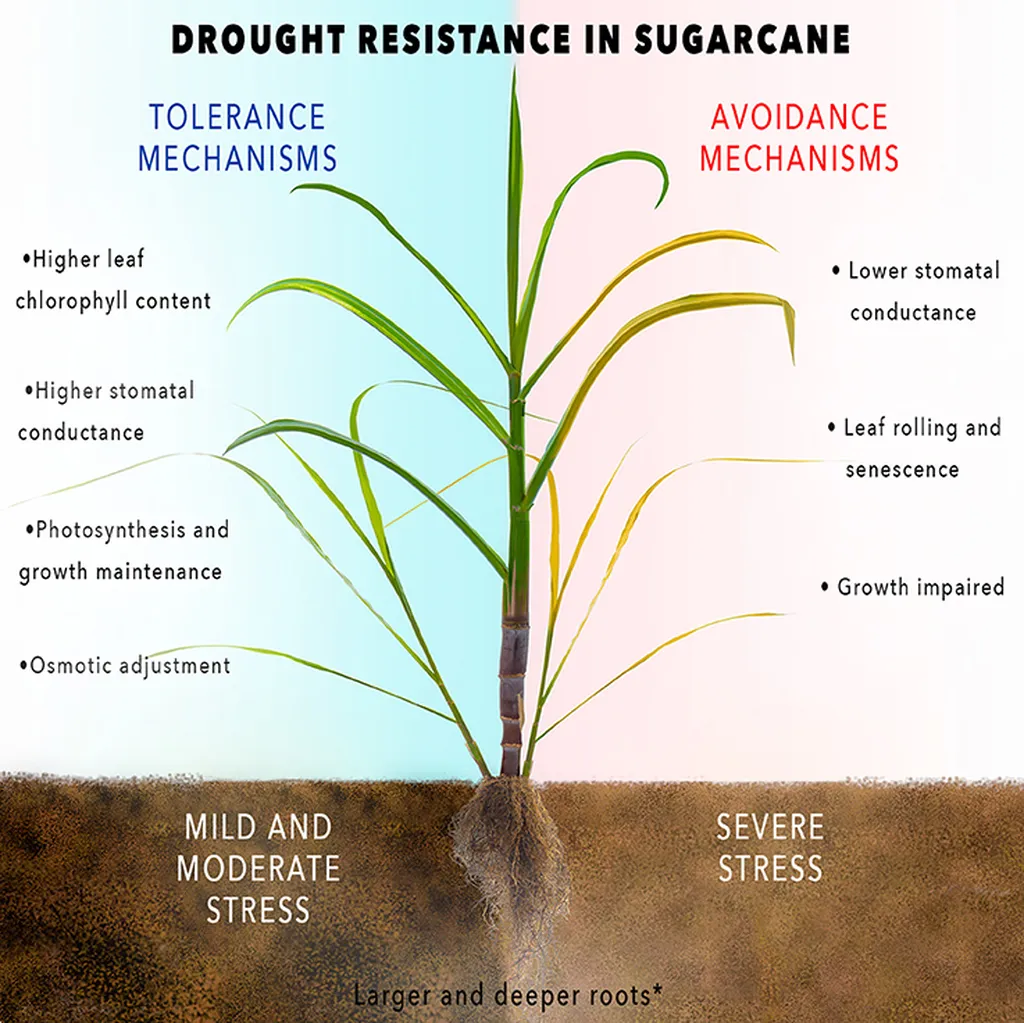In the heart of India’s agricultural landscape, a groundbreaking study is unfolding, one that could reshape the future of sugarcane cultivation, particularly in regions battling salt and drought stress. Researchers, led by S. S. Gadakh from the Dept. of Agricultural Botany, College of Agriculture, Nandurbar, have been delving into the molecular intricacies of salt and drought-tolerant sugarcane mutants, and their findings, published in the ‘International Journal of Bio-Resource and Stress Management’, are stirring excitement in the agritech community.
The study, conducted between 2011 and 2014, is a testament to the power of in vitro mutagenesis and molecular biology techniques in developing stress-tolerant crops. The researchers subjected sugarcane calli to Ethyl Methane Sulphonate (EMS) treatment and cultured them in selective media containing NaCl and PEG to induce salt and drought tolerance, respectively. The aim was to evaluate the molecular variability between the parent and mutant plants.
Using Random Amplified Polymorphic DNA (RAPD) markers, the team identified significant genetic variations between the mutants and the parental plants. “The primer OPK-10 produced maximum polymorphism (100%),” Gadakh revealed, highlighting the extent of genetic divergence induced by the treatments. This polymorphism is a clear indicator of the mutants’ altered genetic makeup, which could confer enhanced stress tolerance.
The study’s findings are not just a scientific curiosity; they hold substantial commercial implications for the agriculture sector. Sugarcane is a vital cash crop, and its yield is often hampered by abiotic stresses like salinity and drought. The development of stress-tolerant varieties could revolutionize sugarcane cultivation, particularly in regions where these stresses are prevalent. This could lead to increased yields, improved farmer livelihoods, and a more robust sugarcane industry.
Moreover, the study’s methodology could be a blueprint for developing stress-tolerant varieties of other crops. As Gadakh put it, “The dendrogram divided the maximum salt and drought-tolerant lines into two clusters, suggesting that salt regenerants are completely different from drought-tolerant lines.” This distinction could pave the way for tailored approaches to developing stress-tolerant crops.
The research also underscores the importance of molecular biology techniques in modern agriculture. RAPD markers, as used in this study, can provide insights into the genetic diversity of crops, aiding in the development of improved varieties. This could be a game-changer in the face of climate change, which is expected to exacerbate abiotic stresses in agricultural systems.
As we look to the future, this study serves as a reminder of the potential of agritech innovations to transform agriculture. It’s a call to action for further research and investment in this field, to unlock the full potential of our crops and secure our food systems in the face of a changing climate. The journey of this research, from the tissue culture laboratory to the fields, could very well be the trajectory of the next agricultural revolution.

